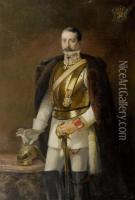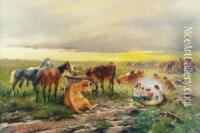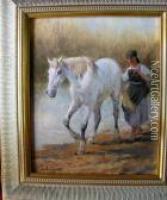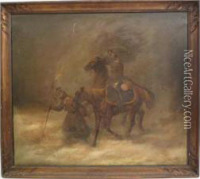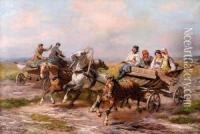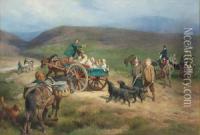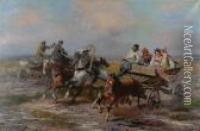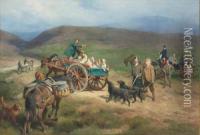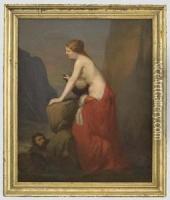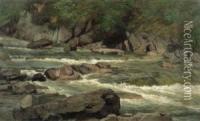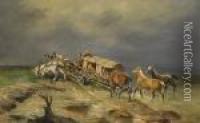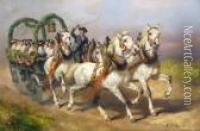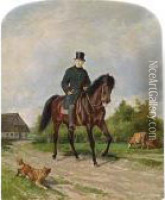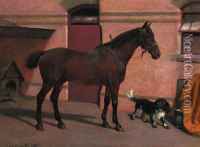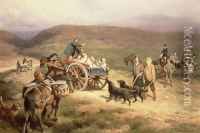Carl Suhrlandt Paintings
Carl Suhrlandt was a German painter known for his skill in both portrait and animal painting. Born on May 23, 1828, in Ludwigslust, Mecklenburg, Suhrlandt showed an early interest in the arts. He pursued his passion by studying at the Academy of Arts in Berlin and later at the Düsseldorf Academy, which was a hub for the Düsseldorf school of painting, a group that emphasized detail, color, and a romantic approach to landscape painting.
Suhrlandt furthered his studies by traveling to Antwerp, where he was influenced by the Flemish tradition of animal painting. He spent significant time in Italy, particularly in Rome, where he absorbed the Italian masters' techniques and was particularly influenced by the works of the Renaissance and the Bolognese School.
Throughout his career, Suhrlandt received various commissions from the nobility and the court of Mecklenburg, which recognized his talent for capturing likenesses in his portraits. He was also known for his ability to depict animals with lifelike accuracy and feeling, which made his work popular among patrons who wanted to commemorate their pets or prized livestock.
Suhrlandt served as a professor at the Grand-Ducal Saxon Art School in Weimar, where he influenced a number of students, sharing his knowledge of painting techniques and composition. His work during this period contributed to the development of the Weimar School of painting.
Carl Suhrlandt's legacy includes a wide range of works from portraits to genre scenes, and particularly his animal paintings which show a remarkable understanding of anatomy and movement. He died on March 14, 1919, in Schwerin, leaving behind a body of work that is still appreciated by art historians and collectors today.

